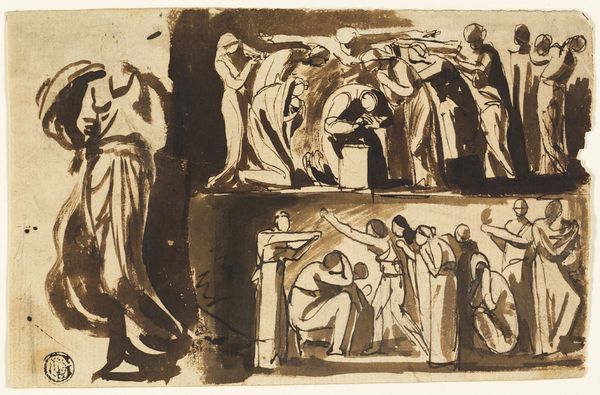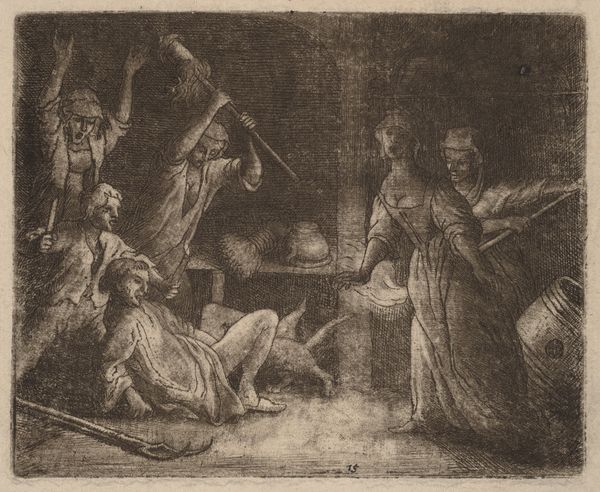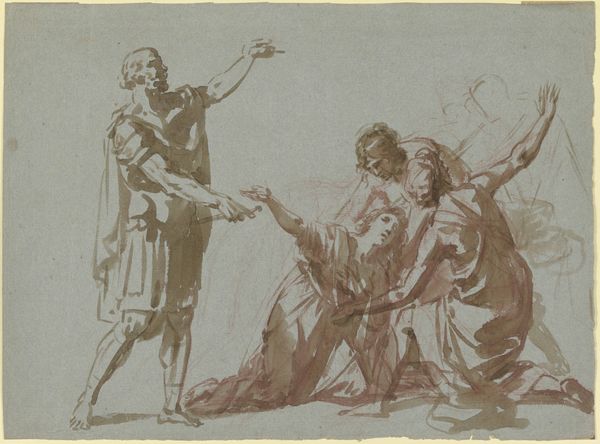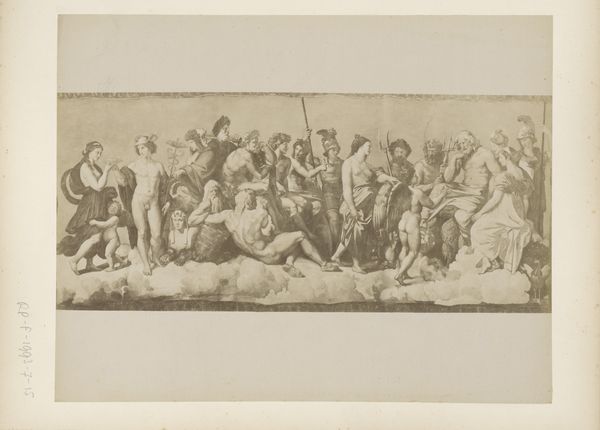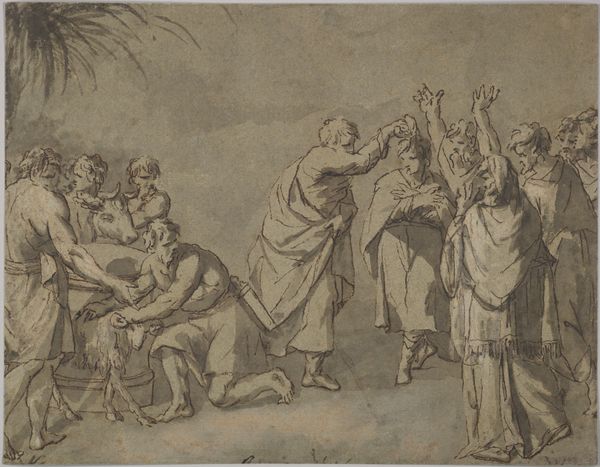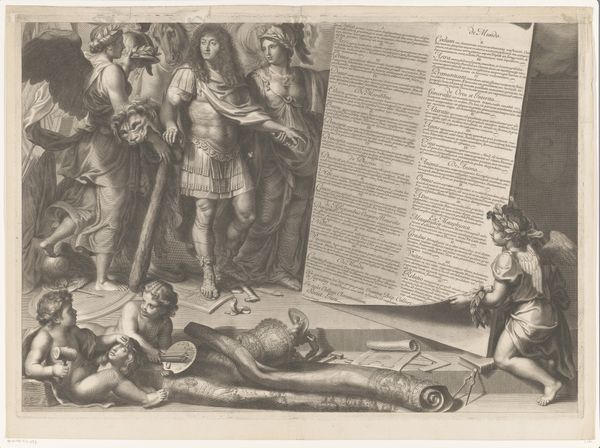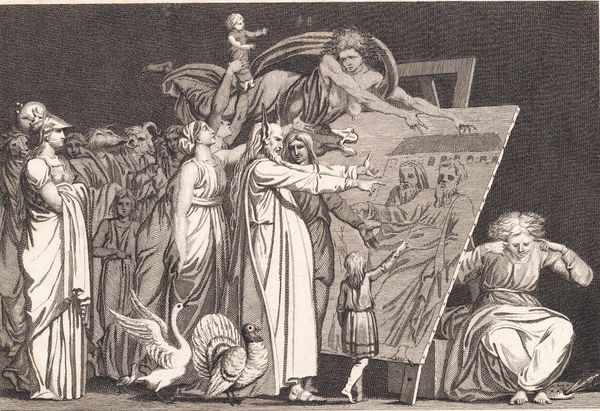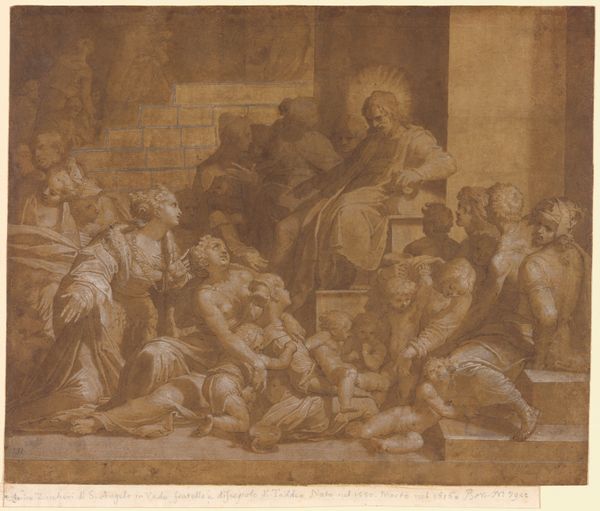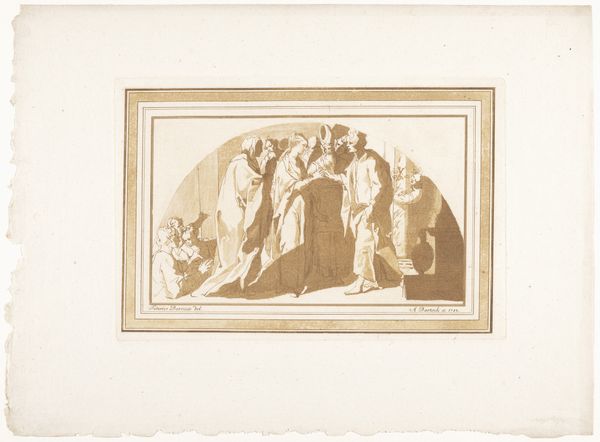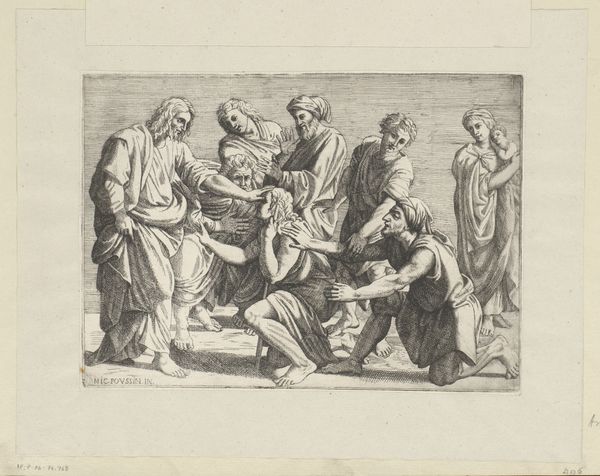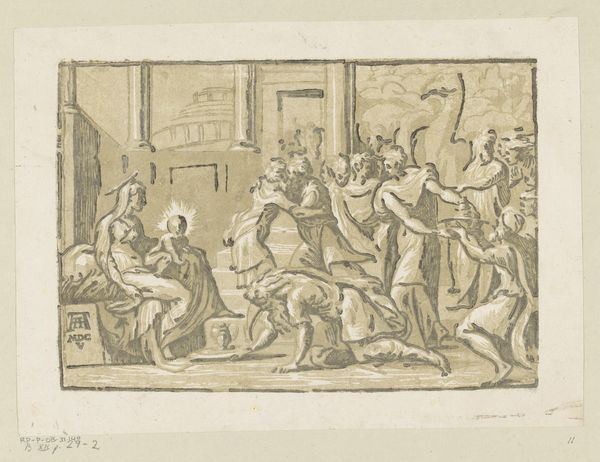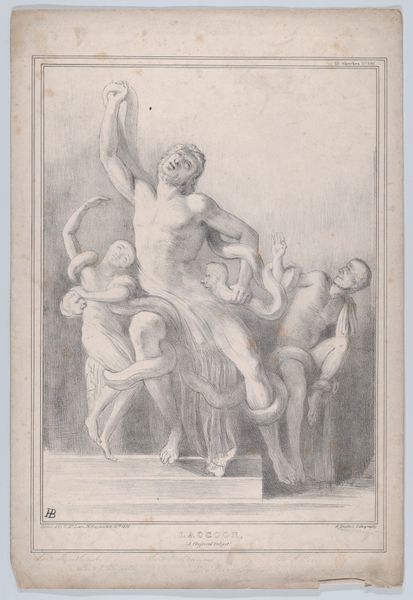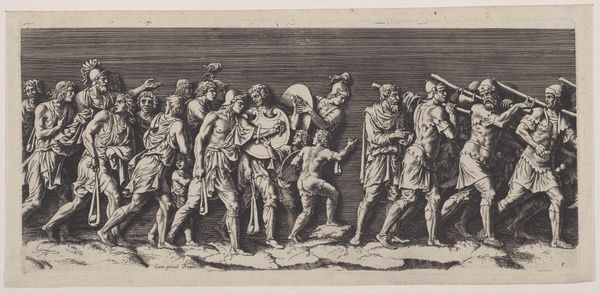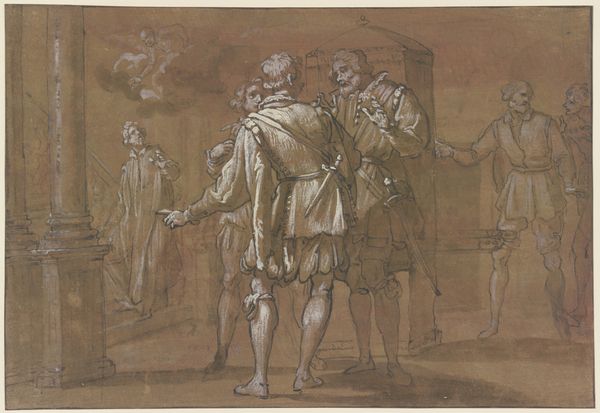
drawing, print, etching, engraving
#
drawing
#
neoclacissism
#
allegory
# print
#
etching
#
figuration
#
line
#
history-painting
#
academic-art
#
engraving
Dimensions: Sheet: 11 13/16 × 17 15/16 in. (30 × 45.6 cm)
Copyright: Public Domain
Curator: What strikes me immediately is the overall sense of anxiety and turmoil conveyed through the artist’s intense use of line. Editor: Indeed. We’re looking at "Calumny after Raphael," an etching and engraving made sometime between 1765 and 1826 by Baron Dominique Vivant Denon, now held at the Metropolitan Museum of Art. Denon was known for his role in documenting and disseminating artistic knowledge. He created this print, revisiting a renowned Renaissance painting to offer his own commentary on the destructive nature of defamation. Curator: The dynamism is undeniable. Notice how Denon masterfully employs line weight to create depth and guide our eyes across the composition. From the sharp, agitated lines defining the figures to the softer, blurred lines suggesting atmosphere, there's a palpable tension. Editor: The narrative unfolds as a direct critique against the uncritical acceptance of falsehoods and politically-motivated smears. Considering the rise of sensationalist pamphlets and proto-journalism in Denon's era, his choice of such a fraught subject really makes a case for artistic and, arguably, journalistic integrity. Curator: Absolutely. Let’s look at the seated figure on the left. Observe the carefully rendered drapery, cascading in linear folds that evoke a classical sensibility, while the rigid pose suggests authority. Editor: Yes, that’s the embodiment of unjust judgment enthroned. Note how Denon renders the figures on the right in a very different light – bathed, literally, in illumination – and recall the changing notions of transparency and 'enlightenment' ideals that circulated among artists and patrons at the time. The composition is not simply beautiful in the classical sense; it's designed to deliver a potent message. Curator: A successful demonstration, wouldn’t you say, of how formal devices can amplify an artwork’s conceptual depth, transforming what could have been a mere reproduction into a powerful visual argument. Editor: Ultimately, "Calumny after Raphael" pushes viewers to critically examine both the visual elements within the artwork and its wider historical implications.
Comments
No comments
Be the first to comment and join the conversation on the ultimate creative platform.
